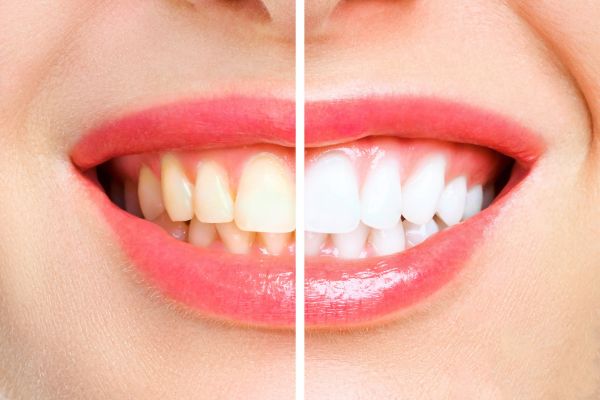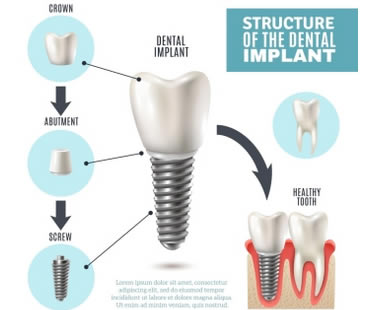
by Dr. Adkins | Jul 27, 2023 | Blog, Cosmetic Dentistry, Dental Topics 4
The Power of a Beautiful Smile
Your smile is the first thing people notice about you. It’s the window to your soul that reveals your confidence, happiness, and overall well-being. A healthy, beautiful smile sends a message of friendliness, approachability, and success.
Unfortunately, not everyone is born with a perfect set of teeth. Many people struggle with dental imperfections such as crooked teeth, gaps, discoloration and more that can undermine their self-esteem and social life.
The good news is that modern cosmetic dentistry can fix virtually any dental imperfection and give you the perfect smile you’ve always dreamed of! In this article, we’ll explore the world of cosmetic dentistry – what it is and how it can transform your teeth – so you can make an informed decision about whether it’s right for you.
Understanding Cosmetic Dentistry
Cosmetic dentistry, in simplest terms, is a dental practice that focuses on improving the appearance of teeth. While traditional dentistry is primarily concerned with maintaining oral health and treating dental issues like cavities and gum diseases, cosmetic dentistry takes it a step further by enhancing the aesthetics of your smile.
Different Types of Cosmetic Dental Procedures Available
There are numerous types of cosmetic dental procedures available today that can transform your teeth and give you the perfect smile. Some common types include:
– Teeth Whitening: This procedure involves removing stains on teeth caused by coffee, tea, wine or smoking. Teeth whitening can be done at home or in-office using bleaching agents.
– Veneers: A veneer is a thin piece of porcelain or composite material that covers the front surface of a tooth to improve its appearance. – Orthodontics: Traditional braces or newer clear aligners like Invisalign help straighten crooked teeth.
– Implants: Dental implants involve replacing missing tooth/teeth with an artificial one that looks natural. – Gum Lifts: This procedure reshapes gum tissue to create an even gum line across all visible teeth.
These are just some examples and there are many other cosmetic dental treatments available depending on your specific needs. Consult with a qualified dentist to find out which treatment option would be best for you.
Common Dental Imperfections and How Cosmetic Dentistry Can Fix Them
Having dental imperfections can significantly affect one’s self-confidence. However, with advancements in cosmetic dentistry, these imperfections can be fixed to achieve a perfect smile. Let’s take a look at some of the most common dental imperfections and how cosmetic dentistry can fix them:
Crooked Teeth
One of the most common dental problems is having crooked teeth. Not only does it impact one’s appearance, but it can also lead to oral health problems such as gum disease and tooth decay. Cosmetic dentistry offers various solutions for fixing crooked teeth, including braces, clear aligners such as Invisalign, and porcelain veneers.
Gaps
Gaps between teeth are another common dental issue that people often seek cosmetic dentistry solutions for. These gaps can occur due to various reasons such as missing teeth or small jawbone size.
One solution for fixing gaps is through the use of orthodontic treatments like braces or clear aligners. Porcelain veneers are another treatment option that can effectively fix gaps between teeth by bonding to the surface of the tooth.
Discoloration
Teeth discoloration is a common problem caused by poor oral hygiene habits or consuming staining foods and drinks like coffee or red wine. Cosmetic dentistry offers many types of treatments to fix this issue including professional teeth whitening procedures like Zoom! Whitening which uses strong bleaching agents to brighten your smile.
Cavities and Tooth Decay
Cavities and tooth decay are painful conditions that often require restorative procedures like fillings or crowns. However, cosmetic dentists offer natural-looking fillings made from materials like composite resin which matches your tooth’s natural color. This way, even after a filling, your tooth will still look and feel like your other teeth.
Gummy Smile
A gummy smile is when your gums are more visible than your teeth when you smile. Cosmetic dentistry offers gum contouring procedures which reshape the gum line to create a more balanced and aesthetically pleasing smile.
The Power of a Beautiful Smile
Cosmetic dentistry is more than just about perfect teeth. Having a beautiful smile can have numerous physical and psychological benefits.
A bright, straight smile can make you appear younger, healthier, and more attractive to others. It can also boost your self-confidence and improve your overall quality of life.
The Psychological Benefits
Having cosmetic dental work done can do wonders for your self-esteem. When you feel confident in your appearance, it translates into other areas of life such as socializing more freely or pursuing goals without fear of judgment.
People with dental imperfections often feel embarrassed or ashamed about their appearance which can lead to feelings of anxiety or depression. Cosmetic dentistry can help alleviate these negative emotions by providing patients with a newfound sense of pride in their appearance.
Physical Benefits
A beautiful smile isn’t just good for the soul; it’s also good for the body too! Having straight teeth makes brushing and flossing easier which leads to better oral hygiene overall. Straight teeth are also less likely to develop cavities or gum disease which helps reduce the risk of other health problems such as heart disease or strokes.
Improving Self-confidence
By far one of the biggest benefits of cosmetic dentistry is that it can help improve self-confidence in individuals who may have felt ashamed or embarrassed about their smiles before treatment. For instance, people with crooked teeth may avoid smiling for fear that others will judge them negatively while people with discolored teeth may try to hide their smiles altogether. With cosmetic dental procedures like veneers, braces, implants etc., people no longer have to live with these insecurities and they are able to show off their new pearly whites proudly!
The Different Types of Cosmetic Dental Procedures
There are several cosmetic dental procedures that can help to enhance your smile and correct any dental imperfections. These procedures are tailored to suit different types of dental issues, and it is important to consult with a cosmetic dentist to determine which procedure is best suited for your specific needs.
Teeth Whitening
Teeth whitening is a popular cosmetic dental procedure designed to improve the appearance of discolored or stained teeth. This procedure involves the use of bleaching agents such as hydrogen peroxide, which penetrate the enamel layer to remove stains and discoloration. Teeth whitening can be done in-office or at home using custom-made trays provided by your dentist.
Veneers
Veneers are thin shells made from porcelain or composite material that are bonded to the front surface of teeth. They can be used to cover stained or discolored teeth, close gaps between teeth, and correct minor imperfections such as chips or cracks. Veneers are custom-made for each patient and require minimal tooth preparation before placement.
Braces and Clear Aligners
Braces are a common orthodontic treatment used to correct misaligned teeth, overbites, underbites, and other bite-related issues. Traditional braces involve metal brackets and wires that apply pressure on the teeth over time, gradually shifting them into their proper position. Clear aligners such as Invisalign can also be used for more discreet treatment.
Clear aligners are a popular orthodontic treatment option that offers a discreet and convenient way to straighten teeth. Made of transparent, custom-fit plastic trays, clear aligners gradually shift teeth into their desired positions. Unlike traditional braces, clear aligners are virtually invisible, making them an appealing choice for individuals who wish to improve their smiles without drawing attention to metal brackets and wires.
Dental Implants
Dental implants are a permanent solution for missing teeth. They involve placing a titanium post into the jawbone, which fuses with the bone over time to create a stable foundation for a replacement tooth or bridge.
Implants can improve your bite function and restore your smile to its natural appearance. Overall, each cosmetic dental procedure has its own benefits and drawbacks.
It’s important to consult with a qualified cosmetic dentist to determine which procedure is best suited for your particular dental imperfections. With the right treatment plan, you can achieve a beautiful, confident smile that will last for years to come.
A Beautiful Smile is Within Reach
Cosmetic dentistry offers a plethora of benefits that can help transform your teeth and overall self-confidence. Regardless of the dental imperfection you may have, there is likely a cosmetic dental procedure that can help correct it. Whether you choose teeth whitening to get rid of stubborn stains or opt for veneers to cover up chips and gaps, the end result will leave you with a stunning smile that can light up any room.
Ready to transform your smile? Schedule your appointment today at our McDonough dental office.

by Dr. Adkins | Jul 13, 2023 | Blog, Dental Topics 4, Invisalign
The Benefits of Invisalign
If you’re considering orthodontic treatment, you may have already heard about Invisalign. This innovative treatment uses clear aligners to gradually shift your teeth into their ideal position.
Unlike traditional braces, Invisalign is virtually invisible and can be removed for eating and cleaning. It’s no wonder that more and more people are choosing this option over traditional metal braces!
Importance of Getting Your Questions Answered
Before starting any new treatment, it’s important to get all of your questions answered. This is especially true with Invisalign, as the process can be relatively new and unknown territory for many people.
You’ll want to make sure you fully understand how the treatment works, if it’s right for you, what to expect during the process, and how to care for your aligners. By asking questions upfront, you can feel confident in your decision to pursue Invisalign and have peace of mind throughout the process.
Plus, your dentist will be able to tailor the treatment specifically to your needs if they know what concerns or questions you have. In our article today we will answer some of the most common questions about Invisalign so that by the end of it you’ll feel well informed about this innovative treatment!
How does Invisalign work?
Invisalign is a modern orthodontic treatment that uses clear aligners to straighten teeth, rather than traditional metal braces. The aligners are custom-made for each patient, using advanced 3D imaging technology to create a personalized treatment plan.
Explanation of the process and technology behind Invisalign
During your initial consultation with a dentist, they will take photos and X-rays of your teeth, as well as impressions or digital scans. This information is used to create a virtual model of your mouth, which the dentist will use to map out the movement of your teeth throughout the course of treatment. Based on this plan, a series of aligners will be created specifically for you.
Each set of aligners is designed to gradually shift your teeth into their desired position. You’ll wear each set of aligners for about two weeks before switching to the next set in the series.
Comparison to traditional braces
Unlike traditional braces that use brackets and wires, Invisalign aligners are made from a clear plastic material that fits comfortably over your teeth. They’re virtually invisible when worn and can be removed for eating and brushing/flossing. This makes them an attractive option for adults who want straighter teeth without having visible metal braces.
Overall, Invisalign tends to be more comfortable than traditional braces since there are no wires or brackets irritating your mouth. However, it’s important to note that Invisalign may not work as well for more complex dental issues such as severe crowding or misaligned bites, which may require traditional braces or other orthodontic treatments.
Will Invisalign work for me?
Factors that determine candidacy for Invisalign treatment
One of the most common questions people ask about Invisalign is whether it will work for them specifically. The truth is, there are a few factors that determine whether someone is a good candidate for Invisalign. One of the most important is how severe their orthodontic issues are.
While Invisalign can be used to treat a wide range of issues, including overbites, underbites, and crossbites, it may not be able to correct more complex problems. Additionally, patients must have healthy teeth and gums before beginning treatment.
Common misconceptions about who can use it
There are some common misconceptions about who can use Invisalign as a treatment option. For example, some people assume that it’s only suitable for minor orthodontic issues or that it’s only appropriate for adults. However, neither of these statements is true.
While Invisalign may not be able to solve every issue someone has with their teeth alignment or bite, many patients have found success using this treatment method regardless of age or severity of their condition. It’s important to consult with an experienced dentist who can evaluate your specific needs and recommend the best course of action.
What should I expect during treatment?
Overview of the timeline and steps involved in treatment
Once you’ve decided to go ahead with Invisalign treatment, your dentist will take digital impressions of your teeth. These will be used to create a customized series of aligners for you to wear over the course of your treatment.
You’ll typically wear each set of aligners for about two weeks, before moving on to the next set. Depending on the severity of your alignment issues, you may need anywhere from 12-48 sets of aligners.
Throughout your treatment, you’ll have periodic check-ins with your dentist, who will monitor your progress and make any necessary adjustments. You may also need additional treatments like attachments (small tooth-colored bumps that help grip the aligners) or elastics (to help correct bite issues).
Tips for adjusting to wearing aligners
Wearing Invisalign aligners can take some getting used to, especially during the first few days after switching to a new set. Here are some tips for making the adjustment period as smooth as possible:
– Keep a travel-sized toothbrush and toothpaste with you at all times so you can brush after meals. – Use orthodontic wax if any part of an aligner is irritating your gums or cheek.
– Stay hydrated by drinking plenty of water throughout the day. – Avoid eating or drinking anything except water while wearing your aligners.
– Clean each set thoroughly before switching to a new one. With these tips in mind, wearing Invisalign should feel like second nature in no time!
How do I care for my aligners?
Taking care of your Invisalign aligners is an important part of the treatment process. By keeping your aligners clean and well-maintained, you can ensure that they continue to fit properly and do their job of gradually shifting your teeth into the proper position. The best way to clean your Invisalign aligners is by using a soft-bristled toothbrush and mild soap.
Be sure to brush them gently, as aggressive brushing can damage the plastic material. You should also avoid using hot water on your aligners, as this can warp or distort them.
Best practices for cleaning and maintaining aligners
Aside from brushing your aligners regularly with soap and water, there are some other best practices you should follow to keep them in good condition. For example, you should always remove your aligners before eating or drinking anything besides water.
This will help prevent stains or damage to the plastic material. You should also store your aligners in their case when they are not in use, rather than leaving them out on a countertop or table where they could easily get lost or damaged.
What to do if an aligner becomes damaged or lost
If one of your Invisalign aligners becomes damaged or lost, don’t panic – there are steps you can take to get back on track with your treatment plan. If it’s just a minor crack or chip in the plastic material, you may be able to continue wearing the same set of aligners until it’s time for the next step in your plan.
However, if an entire tray is lost or severely damaged, contact your dentist right away so they can send a replacement tray as soon as possible. It’s important not to skip ahead in the treatment plan without consulting with a dentist first – even one missed step can disrupt the entire process and make it less effective.
Invisalign option for straighter teeth
It’s important to remember that Invisalign is a viable option for many people seeking orthodontic treatment. The clear aligners offer several advantages over traditional braces, including improved comfort and aesthetics.
However, it’s crucial to have your questions answered before starting treatment to ensure you are informed about the process and prepared for what to expect. Remember that aligners must be worn for at least 22 hours a day, require regular cleaning and maintenance, and may cause some initial discomfort.
Schedule a consultation with a certified Invisalign dentist
If you are considering Invisalign or have additional questions about the treatment process, we encourage you to schedule a consultation with an experienced dentist near you. They can evaluate your unique needs and determine if Invisalign is the right choice for you. Remember that proper alignment not only improves your appearance but also has health benefits such as reducing the risk of gum disease, tooth decay, and other oral health issues.
Thank you for taking the time to read this article about 5 Getting Your Questions about Invisalign Answered. We hope that it has helped answer some of your questions about this popular orthodontic treatment option.
Take the first step towards optimal oral hygiene. Reserve your dental appointment at our McDonough dental office now and experience personalized care.

by Dr. Adkins | Jul 6, 2023 | Blog, Cosmetic Dentistry, Dental Topics 2
The process of improving your appearance through oral changes is called a smile makeover. A wide variety of cosmetic procedures can be performed so that you’ll be happier and more confident about your smile. There are many factors that a cosmetic dentist considers when helping you decide upon your ideal smile. Since it is a completely customized process, your dentist will ask your goals and provide recommendations based on your personal characteristics.
Alignment and spacing
Gapped, crooked, or overcrowded teeth can be aligned and straightened, often through dental veneers or orthodontics. Options for braces have expanded to include less visible approaches such as Invisalign.
Tooth color
Discolored teeth can be the sign of age or habits like consuming dark foods or smoking. Bright, white teeth suggest a more youthful look that can improve your whole appearance. This can be achieved in a smile makeover through professional teeth whitening or dental veneers. Your cosmetic dentist will help you choose the shade that best complements the color and tone of your face and hair, helping you achieve the right balance. You might also choose to have silver fillings replaced with tooth-colored composite so that they are no longer noticeable in your smile.
Tooth length
Aging can cause your teeth to wear down and become shorter, giving you a gummy smile that tends to make you look older than you are. A smile makeover can offer lengthening and reshaping of your teeth through bonding or veneers. Another option is having your gum line modified with laser dentistry so that your teeth appear longer. Altering the length of your teeth to accent your face more appropriately can be a big improvement to your features.
Missing teeth
Gaps in your smile due to missing teeth affects the appearance and function of your mouth, also creating greater risk for tooth decay and tooth shifting. Some smile makeover choices for restoring missing teeth are dental implants, partial dentures, or bridges.
Facial features
The entire shape and look of your face can be improved with certain smile makeover techniques. Examples are oral maxillofacial surgery or orthodontics. Your cosmetic dentist can make suggestions and sometimes even create computer images to show you possible outcomes.
We look forward to seeing you in our McDonough dental office

by Dr. Adkins | Jun 9, 2023 | Blog, Dental Topics 2, Implant Dentistry
If you’ve been wearing dentures for a while, you may have some complaints. They might fit poorly and shift or click when you talk or eat. Poor fit can lead to discomfort and sores in the mouth that worsen over time, or they can collect food underneath them, leading to bad breath.
If this sounds familiar to you, there might be alternatives for you. One of the newest developments in dentures is the pairing of standard dentures with dental implants. The dental implants are placed directly into your jawbone, providing the kind of stability only previously offered by natural teeth. Dentures fixed in the mouth with dental implants become something new: hybrid dentures.
Dentures that utilize dental implants as their anchors are very stable. They enable denture wearers to enjoy foods previously denied them, such as crisp, healthy foods or chewy cuts of meat. Eliminating the food restrictions present for many denture wearers allows them to eat a wider variety of foods, helping to reduce the risk of poor nutrition and the poor health associated with it, including digestion difficulties.
Because of this increased stability, the denture itself can be made smaller. A standard denture covers the roof of the mouth completely, inhibiting the taste and texture of foods. A denture designed around dental implants, however, has an open roof and facilitates a greater enjoyment of foods of all kinds, as well as a more natural feel for your tongue.
Dental implants also stimulate bone by mimicking natural tooth roots. This stimulation allows the bone to continue to be strong and alive, whereas the bones of the face can begin to shrink once a tooth has been extracted. This bone shrinkage leads directly to poor denture fit. Dental implants used with dentures avoid this issue.
If you are a denture wearer and you’d like to see some changes in how your dentures fit, talk to your dentist to see how using dental implants can improve your denture experience.
If you live in the McDonough area contact us today

by Dr. Adkins | Jun 2, 2023 | Blog, Cosmetic Dentistry, Dental Topics 1
Are you unhappy with the appearance of your smile? Will the improvements you desire need multiple dentistry treatments to achieve the results you are seeking? You may be an ideal candidate for a smile makeover. A smile makeover is a process in which a number of cosmetic dentistry treatments are combined to perfect your smile. Usually, a smile makeover will include options like teeth whitening, dental bonding, porcelain veneers, invisible braces, composite fillings or gum contouring.
Broadly, anyone who has problems with their teeth is a candidate for a smile makeover. However, the best candidate for a smile makeover will be in good general and oral health. You should be free from gum disease and any other ailments or health problems that would preclude undergoing cosmetic dentistry procedures. An ideal candidate will also have grown in all permanent teeth and completed their jaw growth, making a smile makeover inappropriate for young children.
You may be an ideal candidate for a smile makeover if your smile is marred by a number of imperfections including:
- Discolored or stained teeth
- Chipped or cracked teeth
- Crooked, twisted, or incorrectly placed teeth
- Decayed teeth
- Gapped or widely-spaced teeth
- Gummy smile
- Unhealthy gums
- Bite conditions such as overbite or underbite
The appearance and health of your smile are vital to your self-confidence and overall happiness. Smile makeovers are safe and effective for most candidates, with little to no side effects. To determine if a smile makeover is right for you, contact an experienced, qualified cosmetic dentist for a one-on-one consultation.
Our dental office is located in McDonough

by Dr. Adkins | May 26, 2023 | Blog, Dental Topics 1, General Dentistry
How much do you really know about your mouth? Most people understand basic brushing and flossing, but they may not realize the myriad of factors that influence dental health. Knowing how your lifestyle impacts your teeth and gums can help you make the best choices to protect your smile.
True or False: You don’t need to floss every day.
Answer: False. Brushing alone won’t protect your mouth from decay or gum disease. Floss gets hard-to-reach areas, cleaning out the plaque and bacteria that wreak havoc on your oral health.
True or False: Taking care of your tongue is important, so you should brush it regularly.
Answer: True. The tiny bumps on your tongue called papillae trap food and bacteria, which can cause bad breath. Brushing twice a day will keep your breath smelling great.
True or False: Soft drinks and sports drinks don’t damage teeth.
Answer: False. These beverages, as well as red wine and fruit juices, can lead to enamel erosion. It’s best to stick with water, but if you consume these drinks, rinse your mouth when you finish.
True or False: It’s okay to put your baby to bed with a bottle of juice or milk.
Answer: False. When you let your baby or toddler fall asleep with anything but water, you increase the risk of baby bottle tooth decay. This condition occurs because of prolonged bottle feeding, usually during sleep. Young children don’t have good plaque removal, so these beverages provide a breeding ground for bacteria.
True or False: Fluoride reduces decay 20 to 40 percent.
Answer: True. Drinking water with fluoride strengthens tooth enamel and also reduces the amount of acid that the bacteria in your mouth produce. Since fluoride was added to the drinking water supplies across the country, childhood cavity rates have dramatically dropped.
Schedule a dental cleaning appointment today at our McDonough dentists office.








 770-957-5214
770-957-5214  E-Mail Us
E-Mail Us 
